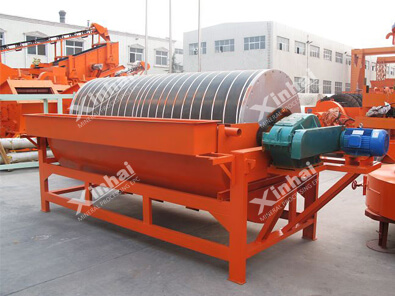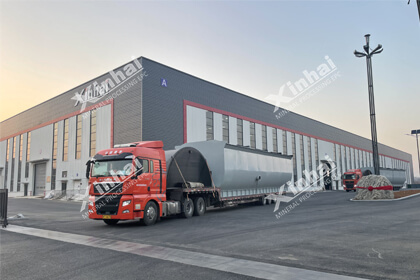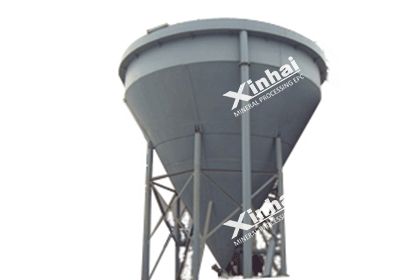Understanding the Process of Quartz Mining and Processing
 Essow
Essow
 May 17, 2023
May 17, 2023
 9413
9413
If you want to know more details about equipment, solutions, etc, please click the button below for free consultation, or leave your requirements!
Quartz is a mineral composed of silicon and oxygen atoms, and is commonly used in a wide range of applications due to its unique physical and chemical properties. The processing of quartz involves several steps, each of which is essential to produce high-quality products. In this article, we will discuss the various steps involved in the processing of quartz.
01Step 1: Mining and Extraction
BackThe first step in the processing of quartz is mining and extraction.
Quartz mining is the process of extracting quartz minerals from the earth for use in various industries, such as electronics, optics, and construction. Quartz is a common mineral that is abundant in the earth's crust and has a wide range of applications due to its unique properties.
The process of quartz mining typically involves the following steps:
Prospecting: The first step in quartz mining is the identification of potential mineral deposits. This involves studying geological maps, conducting field surveys, and analyzing rock samples to determine the presence of quartz minerals.
Exploration: Once a potential mineral deposit has been identified, the next step is to conduct exploratory drilling to determine the size, depth, and quality of the deposit. This involves drilling core samples from the ground and analyzing them to determine the mineral content and other characteristics.
Extraction: After the exploration phase, the actual mining process begins. This typically involves the use of heavy machinery, such as excavators, bulldozers, and trucks, to remove overburden and access the quartz deposit. The quartz is then extracted using mining techniques such as open-pit mining or underground mining.
Processing: After the quartz is extracted from the earth, it is transported to a processing plant, where it is crushed, ground, and purified using various methods such as acid leaching, magnetic separation, and flotation. The purified quartz is then dried and sized to prepare it for use in various applications.
Quartz mining can be a complex and costly process, requiring significant investment in equipment, infrastructure, and labor. It can also have environmental impacts, such as soil erosion, deforestation, and water pollution, if not properly managed. As a result, mining companies are increasingly adopting sustainable mining practices, such as reducing water usage, minimizing waste, and restoring disturbed land, to minimize their environmental footprint.
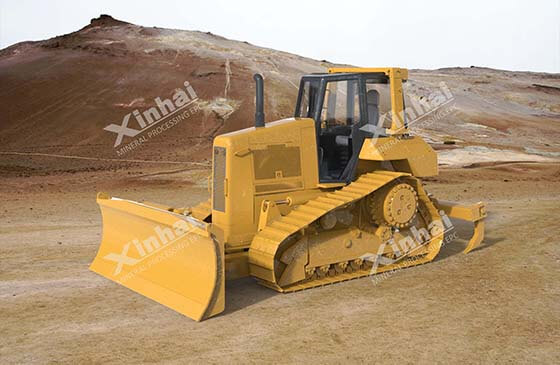
(Bulldozer)
02Step 2: Crushing and Grinding
BackThe second step in the processing of quartz is crushing and grinding. The extracted quartz is first crushed into smaller pieces using a jaw crusher or a gyratory crusher. The crushed quartz is then ground to a fine powder in a ball mill or a rod mill.
The grinding process is essential to produce a uniform size distribution of the quartz particles. This is important because the properties of the final product depend on the size and shape of the quartz particles.
The crushing and grinding process typically involves the following steps:
Crushing: The quartz ore is first crushed using a jaw crusher, gyratory crusher, or impact crusher. The aim of crushing is to reduce the size of the ore to a small enough size for further processing. Crushing is typically done in stages to produce a range of particle sizes.
Grinding: The crushed quartz is then ground using a ball mill, rod mill, or other types of mills. The aim of grinding is to reduce the size of the particles further and increase their surface area. This is achieved by rotating the mill and using steel balls or rods to break the quartz into smaller particles.
Classification: After grinding, the ground quartz is passed through a classifier to separate the particles according to size. The classified particles are then sent to further processing or storage.
The crushing and grinding process can be energy-intensive, and the efficiency of the process depends on several factors, including the hardness of the quartz mineral, the size of the particles, and the type of equipment used. In general, the aim of the process is to produce a range of particle sizes that are suitable for further processing, such as leaching or magnetic separation.
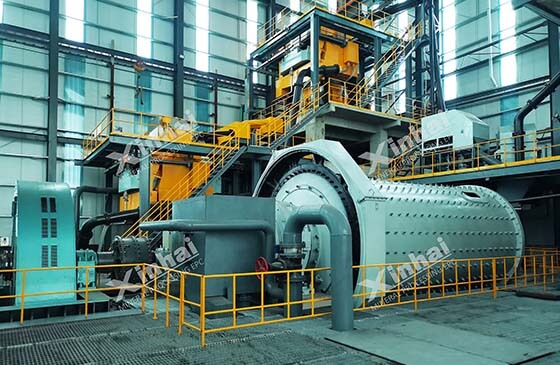
(Ball Mill)
03Step 3: Magnetic Separation
BackThe third step in the processing of quartz is magnetic separation. After the quartz has been ground to a fine powder, it is subjected to magnetic separation to remove any magnetic impurities that may be present. It is commonly used in the processing of quartz and other minerals to remove magnetic impurities and improve the purity of the final product.
Magnetic separation involves the use of a magnetic separator which attracts and separates magnetic particles from non-magnetic particles. The magnetic separator is typically a drum-type separator which rotates around a central axis.
The magnetic properties of minerals are based on their magnetic susceptibility, which is a measure of how easily a material can be magnetized. Magnetic minerals have a high magnetic susceptibility, while non-magnetic minerals have a low magnetic susceptibility. By subjecting a mixture of magnetic and non-magnetic minerals to a magnetic field, the magnetic minerals are attracted to the magnet and separated from the non-magnetic minerals.
Quartz magnetic separation is commonly used in the production of high-purity quartz for use in the semiconductor industry, where even small amounts of magnetic impurities can affect the performance of electronic devices. It is also used in the processing of other minerals, such as feldspar and mica, which can contain magnetic impurities.
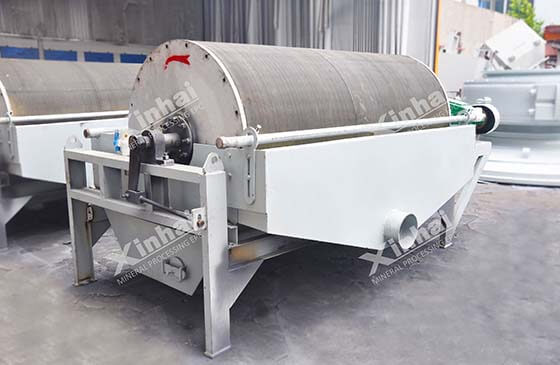
(Magnetic Separator)
04Step 4: Acid Leaching
BackThe fourth step in the processing of quartz is acid leaching. Acid leaching is used to remove impurities such as iron and aluminum from the quartz particles.
Acid leaching involves the use of hydrofluoric acid and an acid-resistant container. The quartz particles are placed in the acid-resistant container and then treated with hydrofluoric acid. The acid reacts with the impurities and dissolves them, leaving behind pure quartz particles.
Quartz acid leaching is a process that involves the treatment of quartz ores or concentrates with acid to dissolve the impurities and leave behind a purified form of the mineral. The process is commonly used in the production of high-purity quartz for use in various industries, such as electronics, optics, and solar energy.
The process typically involves the following steps:
Crushing and grinding: The quartz ore or concentrate is first crushed and ground to reduce the particle size and increase the surface area for acid attack.
Acid leaching: The crushed and ground material is then subjected to acid leaching, typically with hydrochloric acid (HCl) or sulfuric acid (H2SO4). The acid dissolves the impurities, leaving behind a purified form of quartz.
Neutralization and washing: After the acid leaching step, the solution is neutralized to remove any excess acid and washed to remove any remaining impurities.
Drying and calcination: The purified quartz is then dried and calcined at high temperatures to remove any residual water and improve its properties.
The purity of the final product depends on several factors, including the quality of the starting material, the type and concentration of acid used, the temperature and duration of the leaching process, and the efficiency of the neutralization and washing steps. In general, the process can achieve purities of up to 99.99% or higher.
Quartz acid leaching is a widely used method for the production of high-purity quartz, but it can be expensive and environmentally hazardous due to the use of strong acids. Alternative methods such as alkali fusion, microwave heating, and electrochemical leaching are being explored as potential alternatives.
05Step 5: Drying and Sizing
BackThe final step in the processing of quartz is drying and sizing. The pure quartz particles are dried to remove any moisture that may be present. The dried particles are then sized to produce a uniform size distribution.
Drying is an important step in the processing of quartz because it removes any residual moisture that may be present after the leaching process. Excess moisture can cause the quartz to clump together, reducing its flowability and making it difficult to handle and transport. Drying also improves the properties of the quartz, such as its thermal stability and electrical conductivity.
There are several methods for drying quartz, including air drying, oven drying, and rotary drying. In air drying, the quartz is spread out in a thin layer and allowed to dry naturally, typically in the sun or under a fan. In oven drying, the quartz is placed in an oven and heated at a controlled temperature until it is completely dry. Rotary drying involves the use of a rotating drum or cylinder to tumble and dry the quartz.
After drying, the quartz is typically sized or screened to ensure that it meets the required specifications for the intended application. Sizing involves separating the quartz into different size fractions based on particle size distribution. This can be done using screens or sieves, which contain a series of mesh openings of different sizes. The quartz is passed through the screens, and the particles that are too large or too small are separated out.
The sizing of quartz is important because different applications require different particle size distributions. For example, in the production of high-purity quartz for the semiconductor industry, a narrow particle size distribution is required to ensure consistent performance. In other applications, such as construction materials or abrasives, a broader range of particle sizes may be acceptable.
Overall, the drying and sizing of quartz are important steps in the processing of this valuable mineral, ensuring that it meets the required specifications and is suitable for use in a wide range of applications.
06To Wrap Up
BackIn conclusion, the processing of quartz involves several steps which are essential to produce high-quality products. These steps include mining and extraction, crushing and grinding, magnetic separation, acid leaching, and drying and sizing. Each step is important in its own right and must be carefully controlled to ensure that the final product meets the required specifications.
We have other articles about quartz processing too, please click the link to check. Optimizing the Production of High-Purity Quartz Sand. How to Remove the Metal and Non-metallic Mineral Impurities in Quartz Sand? 4 Stages of the Quartz Sand Beneficiation Process
If you need anything about quartz processing, feel free to contact us online or leave us messages.
 +86 183 3575 8886
+86 183 3575 8886 pinklaurabao@gmail.com
pinklaurabao@gmail.com




 Message
Message Chat Now
Chat Now


